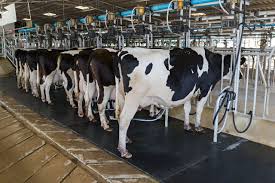Bird Flu Virus in Dairy Cattle – USA Reports
Dr Abdul Samad
A total of eight provinces in the USA have reported detection of bird flu virus in cattle and one case in in the dairy personnel (milker). It is difficult to say whether it is spreading from one state to another or is being detected now, after few cases were reported in the country. Does this amount to risk of spillover to mammals, including humans? Many scientists right now believe that the transmission might be mechanical, accidental as it is not presenting like a respiratory illness. The cattle are not shedding large amount of virus from their nose and mouth. It is suspected that the transmission is during the process of milking, as high concentration of virus is found in milk. Moreover, genomic analysis has shown that the virus isolated from cattle has not undergone radical changes.
A mutation in gene PB2 has been detected in the virus isolated from the Texas dairy worker. In general, the flu virus is known to get mutated at this gene as the virus evolves to jump, but not sufficient to infect mammals. But it does tell us that the virus is evolving to replicate inside cattle / human. For virus to multiply and cause the disease, it must bind to specific receptors in the upper respiratory tract, then only these are capable to churn out copies.
It is necessary that the virus mutates at several genes to evolve efficient receptor-binding and internalization to lock onto the receptors in the upper respiratory tract of humans. This would allow it to easily gain access and churn out copies of itself. Other than cattle, the virus has also been identified in other mammals, but cattle becoming a major host and part of the transmission cycle to human appears to be a far reality. Scientists also believe that virus may have been introduced in wild mammals through consuming dead birds or exposed to faeces. In cattle it might have been through contaminated feed. There are several reports confirming mammal-to mammal transmission through contact (and not airborne) causing fatal illness. In summary, the situation need to be monitored closely, but no need to panic.
Depopulation of the natural host may be the major factor: Viruses being a simple organism are known to be intelligent and highly adaptive. Their survival instinct is much stronger than human. I belong to the group of scientists who are against the strategy of eliminating the virus by depopulating the natural host. There are numerous examples, where non-availability of natural host forced the pathogen to jump and adapt to new host. So, the best strategy is Live-n-Let-Live. Even death of a host is not in the interest of the virus hence they would like to strike a balance. This balance is usually brought about by enhancing the immune status of the host through vaccination. But, copying the western countries we have chosen a wrong policy under export pressure. Consider what would be the situation if the virus adapts to cattle and able to transmit to human. Are we ready to depopulate the cattle population? A combination of vaccination and anti-viral treatment, in my opinion should be the strategy. *************



